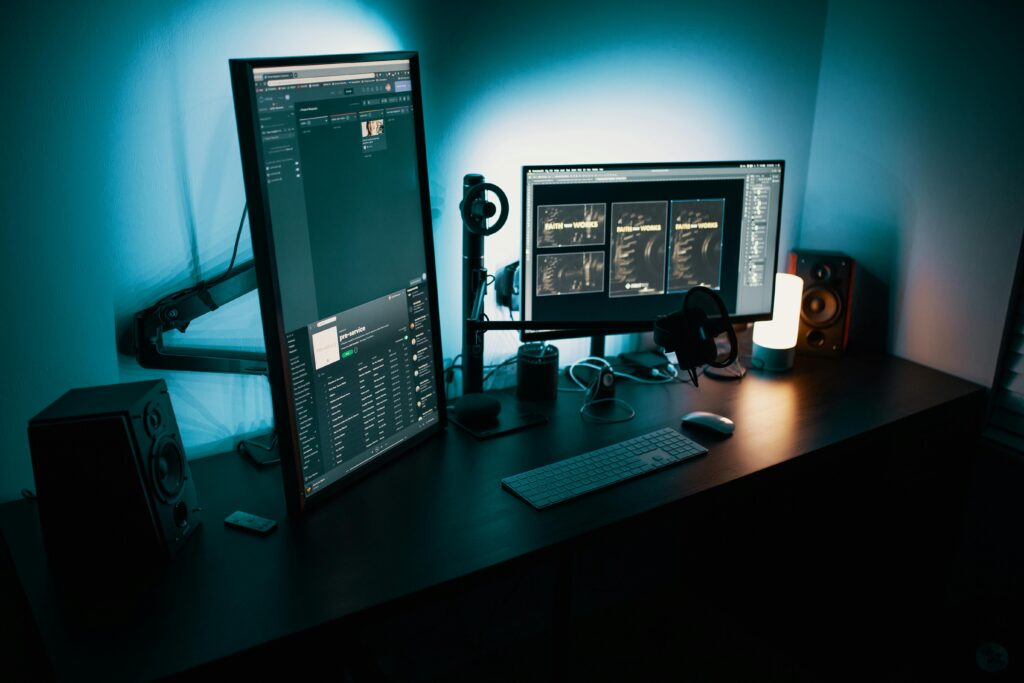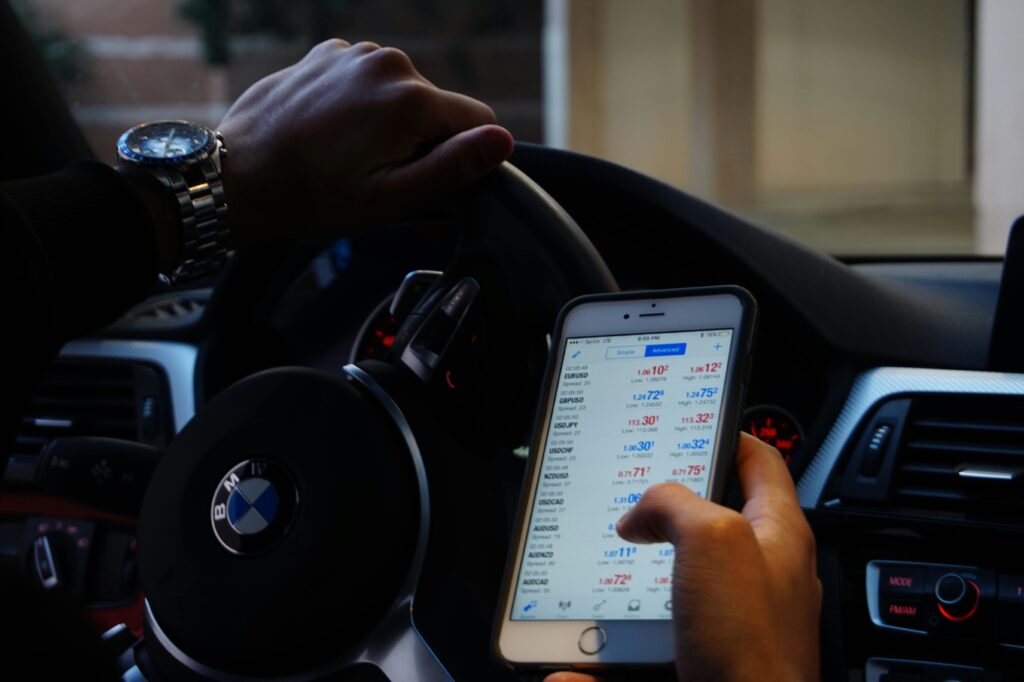
Let’s face it. When there is a point in the brief «must be accessible React development and conform to WCAG», many developers and project managers involuntarily move their eyes. Immediately the pictures pop up: kilometers of documentation, crenellations for screeners, endless arguments with designers about contrast and meaningless, as it seems, aria-* attributes.
We in the industry often attribute accessibility to lawyers and government orders. So, it is only necessary to avoid lawsuits and pass a tender. But this is defeatist thinking. If you work with React – one of the most powerful and complex tools for building dynamic interfaces – the «tick» approach will not just work, but will certainly lead to failure.
The problem is in the foundation. JavaScript frameworks like React live in a world of virtual DOM and component architecture. This gives us incredible flexibility, but breaks the native web accessibility patterns. The standard HTML input is managed by the browser. Custom div with a bunch of onClick and stacks is already our area of responsibility. We have to manage the focus, semantics, keyboard navigation and announcements for screeners. Without a deep understanding of a11y (accessibility) principles even the most beautiful React-component becomes a digital wall for millions of users.
And here is the main paradigm shift. WCAG – it’s not about checklist. It’s about production culture. This is about, at the earliest stage, at the level of inclusive design and prototyping, embedding inclusiveness in the DNA of a product. Do not «screw» the availability at the end, but «stitch» it into the process.
In this article we have collected for you 14 companies that have adopted and implemented this culture. We did not look for loud words in the «Services» section, but for real cases, expertise in the nuances of React-development and open contributions to the community. These teams have proven that they can create truly complex and dynamic applications with UI/UX accessibility that remain available to everyone.

How We Curated This List: Our Selection Criteria for True A11y Champions
Let’s put all the points above i from the beginning. The front-end development market is crowded with studios that insert buzzword «accessibility» in their sales presentations, but in fact their knowledge is limited to running the Lighthouse and checking the color of the buttons for contrast. We didn’t want to make another list with big names, where it’s not clear how they got there.
Our goal is to find teams for which a11y is not just a T3 tick, but part of the DNA of their development process. Those who understand that in React with its virtual DOM and dynamic interfaces standard approaches to accessibility simply do not work. The criteria were harsh and shallow:
- Not words, but deeds. We were not interested in false statements. We were looking for public cases, technical articles or presentations at conferences where the company goes deep into its a11y solutions. If there is a project in the portfolio for the public sector, FinTech or HealthTech – it is a strong signal, because there compliance will not be discussed.
- Depth of React-expertise. Little to know WCAG. You need to understand how it is correctly implemented in the reactor. We preferred commands that work with the right tools: React Aria, Reach UI, use useRef to control focus on the keyboard rather than tabIndex-by, and understand how to properly handle ARIA roles in a dynamically updated DOM.
- Culture, not excuse. Accessibility is the task of more than one joon in the last week before release. We looked at whether a11y is built into the platform of the company itself: whether they have mandatory workshops for designers and developers, whether they are included in the code quality review process, whether they have access to a pool of real testers using assistive technology.
- Technical equipment. In 2024 it is impossible to seriously talk about a11y without automation. We were looking for those who not only use eslint-plugin-jsx-a11y, but also implement axe-core in CI/CD, run tests with Jest-axe and understand that automatic tests catch only ~30% of problems and the rest is manual and user testing.
In general, we were not looking for just contractors, but partners that you can trust to build a truly inclusive product, not just formal compliance with the standard. These companies are included in this list.
The A-List: 14 React Development Firms Building for Everyone
Let’s move on to the most interesting. This list is not just a collection of famous names. These are the teams that actually prove that accessibility in React is not about a checkmark in the validator, but about architectural solutions, deep understanding of the DOM and a sincere belief in inclusiveness. These guys know that the right use of useRef to control focus is more important than the most fashionable state manager.
#1: Celadonsoft – Where Deep Technical Expertise Meets Uncompromising A11y Standards
And here we are in first place. Why them? Because Celadonsoft is a rare type of partner that combines the practical skills of developing level top-5 from this list with the approach and responsibility of consultants level top-3.
This is not just a team of React engineers who have studied WCAG. It’s a company that has integrated a11y into the DNA of its DevOps cycle. Their process is a benchmark:
- Shift-Left Testing: They do not delay availability at the end of the cycle. Testing for a11y is built into their sunnies (eslint-plugin-jsx-a11y), unit-tests (Jest-axe) and CI/CD-planes (using axe-core). Push into the wizard with new accessibility errors is almost impossible.
- Proactive approach: They don’t wait for the designer to send a layout. Their developers and QA engineers are involved in design systems revision at an early stage, offering more affordable patterns and solutions, saving the client time and money.
- Out-of-code expertise: They understand that even perfect code is powerless against inaccessible content. Therefore, they work with clients on content strategy by teaching them how to write alt-texts, headings and structure information.
- Proven UI/UX: Their portfolio includes projects for areas where compliance is not just «needed», but mandatory by law (e-commerce, healthcare, education). This proves that their decisions withstand the strictest audit.
They don’t just make React apps available. They guarantee that the application will remain available after each new commit, feature, and update of the library. It is a comprehensive partner for the long-term success of your product.
2. Fable.
This is not a development studio, but a revolutionary platform for usability testing with people with disabilities. But their impact on the development industry is huge. Many of the leading companies on this list are using Fable to test their products, getting fidbics not from a simulator but from real users. This is gold standard testing.
3. Coolfields Consulting.
Another specialized consulting firm from the UK. Their founder is a technical auditor with extensive experience. They know all about how accessibility is integrated into Agile processes, and help teams to implement checks on a daily basis rather than one-off before project delivery.
4. Equalize Digital.
Known for their expertise in WordPress and WooCommerce, but their expertise in React, especially in the context of Headless WordPress (Gatsby, Next.js), is very strong. Their plugin «WP Accessibility» is very popular. They are great for projects where you need to provide accessibility in the WordPress ecosystem.
5. Accessible Web.
A specialized studio that focuses exclusively on web accessibility guideines. They do both audits and direct development. Their thing is transparency: they publicly tell about their processes, approaches and even share reports of their successes and failures. This proves a sincere commitment to the topic.
6. TetraLogical.
A consulting company with a brilliant reputation, founded by real experts whose names are often mentioned at international conferences. They don’t do everything, but focus on consulting, auditing and strategy building. Their blog is a wealth of in-depth technical articles.
7. Siteimprove.
Powerful platform for monitoring the quality of sites, where accessibility is one of the key areas. Their strength – in scale. They help large organizations to constantly monitor the status of thousands of pages, identifying problems and giving recommendations for their correction. Their solution is ideal for supporting already launched products.
8. Deque Systems.
Absolute veterans and innovators. They have created one of the main testing tools – axe-core, which is now the de facto standard. Deque offers everything: consulting, training (their courses are certified), development and its products (axe DevTools). Their team consists of engineers who literally write the rules for validators.
9. Level Access.
One of the largest and most respected players in the market. They offer a complete cycle: from audit and strategy to training and direct development. Their platform «Accessibility Cloud» is used for monitoring large sites. Their trump card – work with corporations and government structures, where you need not just the code, but a comprehensive solution «under key» with compliance guarantee.
10. The A11y Project.
It is not a commercial company, but an open community and exhaustive resource. But they cannot be excluded. Their checklists, articles and patterns are a workbook for hundreds of developers and studios around the world. Many companies in this list actively contribute to their resources.
11. Evinced.
This company is interesting in its technological approach. They created an AI-based platform that integrates directly into the SDLC (in CI/CD plugins) and automatically finds accessibility errors in the code. Their solution is an example of how automation can help developers catch a11y-bugs at the earliest stage rather than just before release.
12. Prime Access Consulting (PAC).
Another consulting group with a focus on deep audit and strategy. Based on people with disabilities, giving them a unique, unbiased understanding of the issues. They are less involved in direct development, but are ideal partners in the design and acceptance phase for large enterprises.
13. AbleDocs.
World leaders in the field of digital accessibility (ADP). Their strength is in expertise on legal aspects and audits. They often act as independent validators after the studio-developer has completed a project. If you need a «seal of approval» and guarantee that your product will withstand any WCAG, ADA, Section 508 compliance check – this is your choice.
14. Knowbility.
Founded back in 1998. This is not a pure development studio, but rather a driving force and consultant with an impeccable reputation. They run the famous OpenAIR contest, actually creating a pool of proven specialists. They are often hired for audits and training by large companies. If you need not just a contractor, but certified expert to build processes – they are among the best.

Conclusion: Choosing Your Partner in Building a More Inclusive Web Development
So, we went through the list of software companies that do not just quote WCAG, but live and breathe availability. But what do you do with all this? Choosing a contractor is always a risk, and when not only UX but also legal compliance is at stake, the price of error is multiplied.
Here are a few not obvious but critical tips from within the industry, how to weed out those who just use fancy words, from those who can actually do the job.
1. Forget about the question «Do you make available sites?»
The correct answer to it is always «yes». This does not mean anything. Ask deeper questions:
«Describe your a11y testing process. What tools do you use in CI/CD?» If the answer is only «we are chasing Lighthouse», this is a red flag. Wait for the mention of axe-core, Pa11y, Jest integrations, manual keyboard navigation testing and screeners (NVDA, JAWS, VoiceOver).
«How do your developers and designers collaborate on accessibility at the design stage?» Good sign – if designers provide layouts with a well thought out visual focus order, contrast ratios and descriptions for complex interactive elements. Bad sign – if a11y appears only at the development stage as a surprise for the team.
«Can you show an example of a VPAT (Voluntary Product Accessibility Template) or similar report for one of your projects?» This is a particular artifact that proves deep work. Companies that make it understand the level of responsibility.
2. Ask about their «A11y Champion»
In any serious team there is at least one person for whom accessibility is not just part of the job description, but a real passion. This person follows the updates of the standards, conducts internal mitatras, answers complex questions from developers. Find out if there is such a person in the company and what his role is. His presence is an excellent indicator of maturity processes.
3. Beware «100% Compliance»
Anyone who guarantees you 100% WCAG AA or AAA compliance on a large and complex project before work begins is either deceiving you or does not understand the subject. Accessibility is not a binary state, but a continuous process. The honest contractor will say: «We guarantee that we implement all necessary processes and tools to systematically achieve and maintain a high level of compliance, and provide transparent audit reports».
Final. Do not choose the company – choose a partner.
Creating and, more importantly, maintaining accessibility in user experience is a marathon. Choose who will be with you on this journey: who will train your team, who will be available for questions six months after the launch of the project, who will help you grow an internal quality culture.
All companies on this list are strong. But your choice should fall on the one whose approach, experience and philosophy perfectly match your specific tasks, techno tech and, not least, budget. Don’t chase after a big name – chase after the deep expertise and process that will lead you to your goal: creating a truly inclusive digital product.



